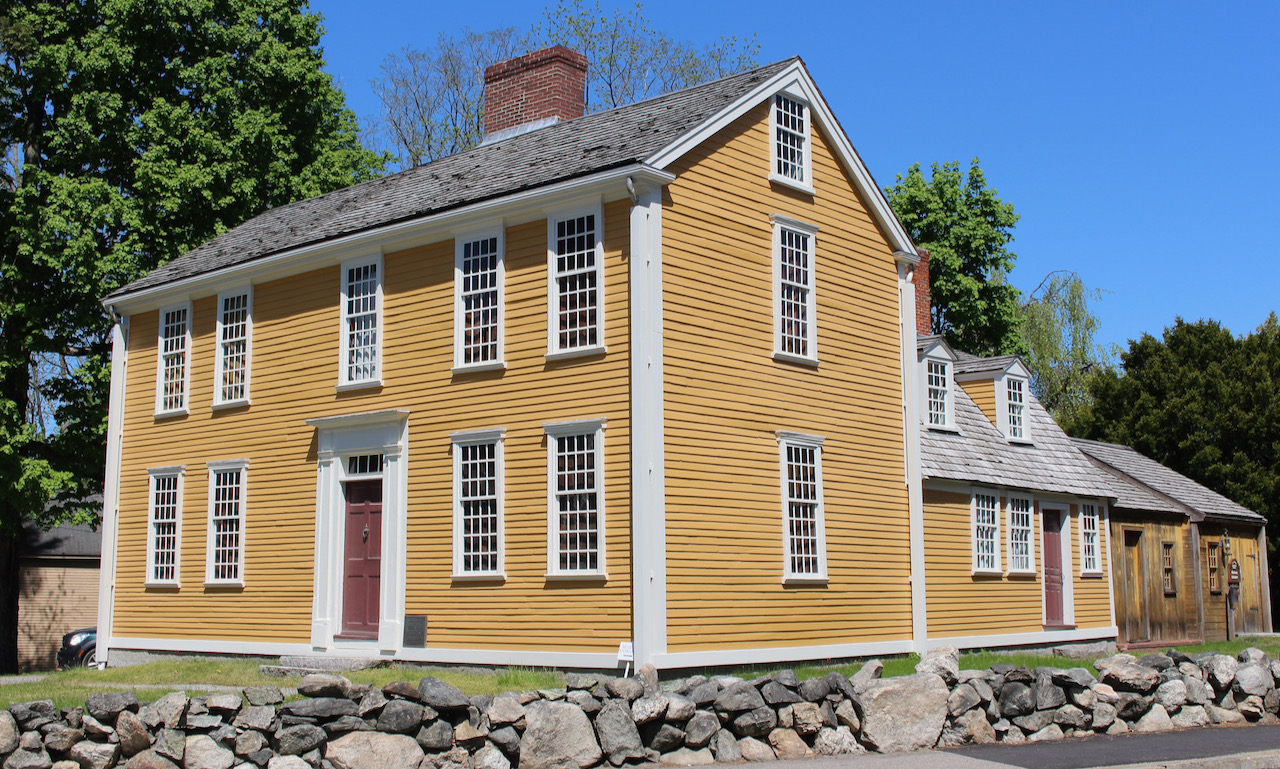The Hancock-Clarke House in Lexington, Massachusetts was the boy-hood home of John Hancock and is the only extant structure which can be associated with the first signer of the Declaration of Independence. It was originally built in 1698 by his grandfather, the Reverend John Hancock, who lived in the house for fifty-five years. His successor, the Reverend Jonas Clarke, lived there for fifty years.
The Hancock-Clarke House consists of two parts which were erected at different times. Originally, the small one-and-a-half-story gambrel-roofed framed ell contained a common living room or kitchen and a tiny parson’s study downstairs with two low-ceiling chambers above. The main or front part of the house with a two-and-a-half story frame structure, large central chimney, and two rooms on each of the two floors was added in 1734 at the expense of Thomas Hancock, a prosperous Boston merchant who was the second son of the Reverend.
John Hancock and Samuel Adams were guests in this house on the night of April 18, 1775. Awakened by Paul Revere, the two patriots were hustled away from Lexington to avoid capture by the approaching British forces.
In 1896, the Lexington Historical Society purchased the house and moved it across the street to save it from demolition. Upon acquiring the former site in 1974, the society moved it back to its original location where it is operated as a museum. The house was designated a National Historic Landmark in 1971.

